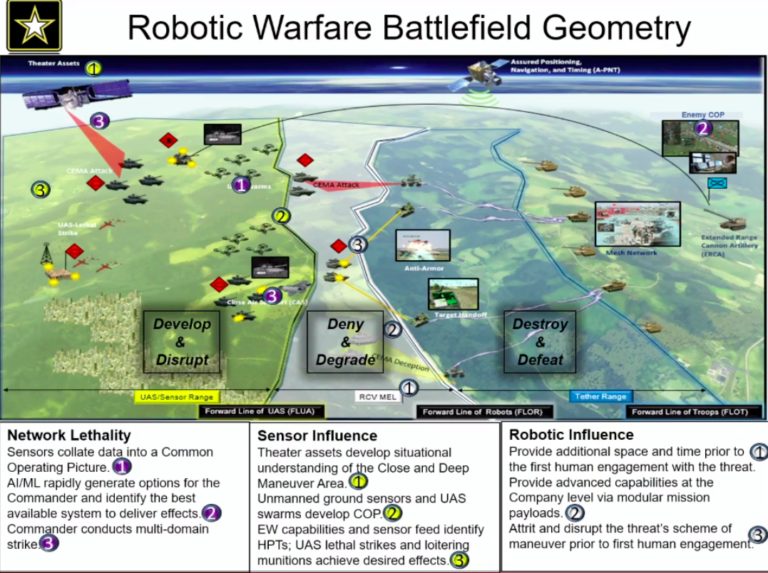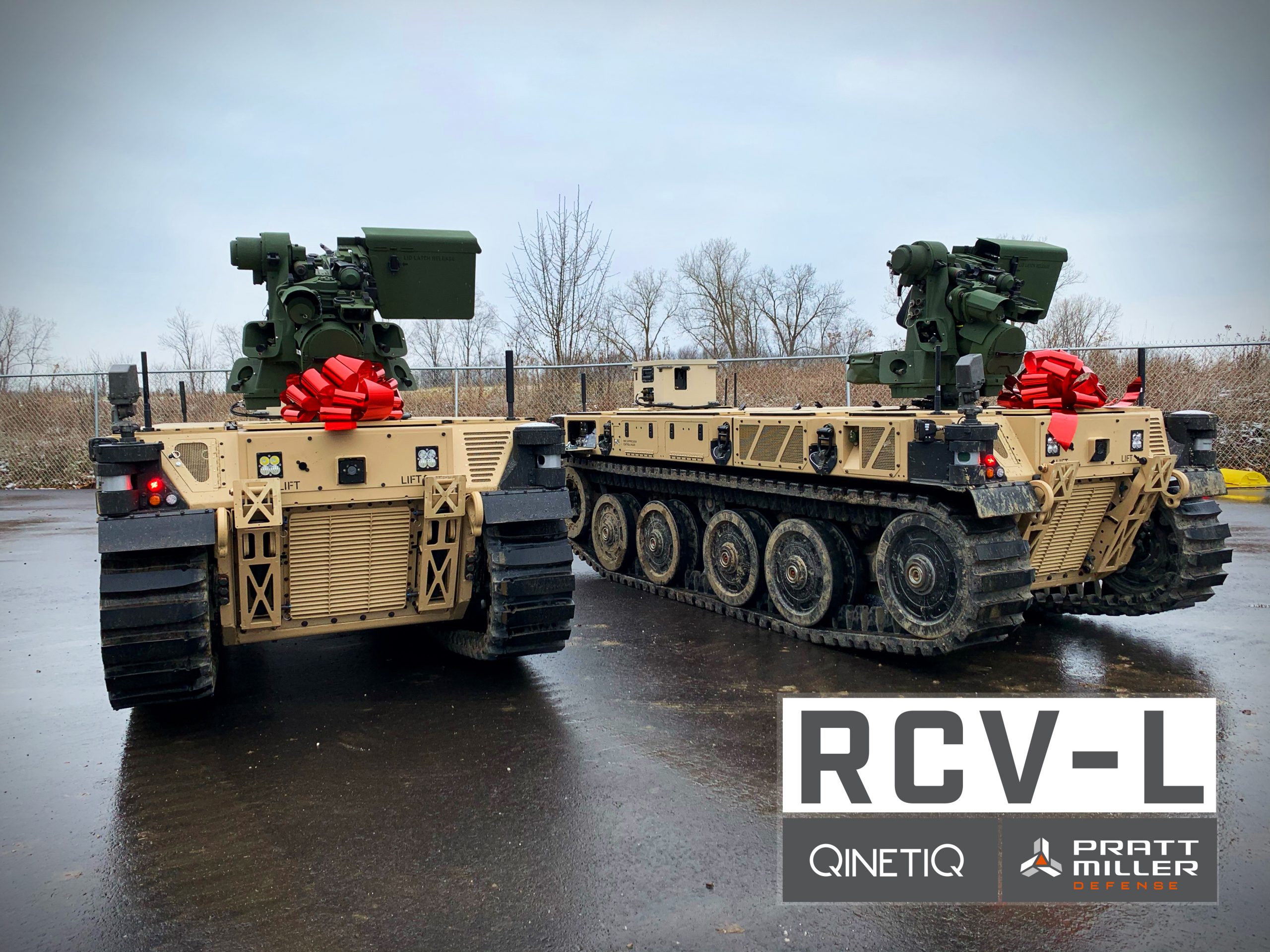In December 19th, the US Army’s Ground Vehicle Systems Center (GVSC) received its RCV-L’s 3 and 4.
This was a very short-term order, since the US Army ordered 4, and it received the first one on November 5th, 2019.
They will be used alongside four Textron-built RCV-Mediums in field tests.
the Army plans to buy 16 more of each variant as it scales up to more complex experiments.
In 2022, exercises will be organized that will determine the feasibility of the service’s ambitious plans for a “forward line of robots” to precede human troops into battle.
The RCV-Light is a “very collaborative effort” that pulls together technologies from QinetiQ, industry partner Pratt Miller, and the Army’s Ground Vehicle Systems Center, QinetiQ’s director of unmanned systems said.
It also builds on “years of testing” of earlier versions by the famed Marine Corps Warfighting Laboratory in Quantico, Va., Jonathan Hastie said.
The platform itself is Pratt Miller’s EMAV (Expeditionary Autonomous Modular Vehicle), a low-slung hybrid-electric vehicle with tracks to cover rough terrain, with a maximum speed of 45 mph. It’s robust enough to carry 7,200 pounds of payload – more than its own 6,800 lbs.
It is also compact enough to fit aboard a Marine V-22 tiltrotor or an Army CH-47 helicopter. This is the system tested by the Marines.
A big bonus for the US Army is QinetiQ’s implementation of a Modular Open Systems Architecture (MOSA), compliant with the Pentagon-defined Inter-Operability Profile (IOP) for ground robotics.
This specific vehicle features a Kongsberg CROWS-J weapon station. It is essentially a remote-controlled mini turret combining a machine gun and a Javelin anti-tank missile launcher.
The RCV-L also carries a mini-drone, the HoverFly Tethered Unmanned Aerial System, which it can launch to look over buildings, hills, and obstacles while the ground vehicle stays hidden.
The drone is physically connected to the robot by a power and communications cable, even during flight. That does limit its range but effectively allows it unlimited flight time.
The Army’s Ground Vehicle Systems Center provides the software to control both the drone and the weapons station. GVSC also developed the autonomy package.
It’s a version of the common software the Army is developing for a variety of robotic vehicles, allowing them to navigate cross-country and around obstacles without constant human intervention.
Separately, the Textron-built RCV-medium is the Ripsaw M5 – built based on Howe & Howe’s expertise in building purpose-built ground vehicles, such as EV3-F1, EV3-F2, and EV3-F4. The vehicle also uses FLIR’s technological innovation and experience in unmanned vehicle technology and Textron’s expertise in defence and technological disruptions.
The exoskeleton of the M5 tank is a rigidly welded tubular structure based on a patented high-performance suspension. The Ripsaw M5 has a maximum gross weight of 3,855.54kg and can carry payloads weighing up to 2,721.5kg.
The high modularity of the M5 means it is suitable for several applications. Its open and flat architecture enables the integration of different payloads for multiple combat applications. The vehicle integrates FLIR’s electronics and a turret for carrying weapon systems. It also comes fitted with high-intensity lighting systems.

The US Army envisions drones and ground robots advancing ahead of humans in future wars. (Enemy forces are at the left of the chart, friendly forces are moving right to left).
MORE ON THE TOPIC:







very nice little system